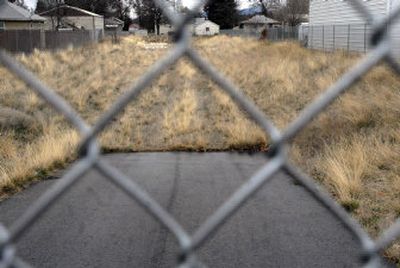Valley set to spruce up unsightly swales

Grass is supposed to filter the contaminants washed off University Road and into two ponds. But for years, neighbors say, the areas have looked more like vacant lots than community property.
“I’ve never seen anything green except the weeds when they come up early,” said Hope Bina.
A storm swale the size of a large residential lot was built next to her property in 2000 to filter oil and other chemicals before rain and snowmelt from University seep toward the aquifer.
“They told us it would be kept up like a park,” said Bina.
Instead, neighbors have been nagging the county and then the city of Spokane Valley for years to mow down the wild foliage on the land.
“A lot of tumbleweeds come over the thing and into our yard,” said Sylvia Phillips, who lives next to one of the swales between Broadway and Valleyway.
Another swale, just as large, sits off the road just south of Boone.
“It’s an eyesore,” said Kathy Strobridge.
Originally, the county used inmates to clear the weeds, Strobridge said.
One of them escaped and was promptly caught in her yard but at least the lot next to hers looked a little better, she said.
Recently, though, the swales off University seemed all but abandoned and the weeds undisturbed.
City officials say that’s because they didn’t know they owned them.
“They weren’t included on the map that we had,” said city spokeswoman Carolbelle Branch.
Crews have been scheduled to remove weeds and litter there today, she said.
The city owns about 900 swales, most inherited from the county after incorporation.
Homeowners pay a $20 fee with their property taxes each year to take care of the city’s storm water infrastructure. The fee will increase by $1 next year.
By the city’s own rules, property owners that own land with a swale on it are required to keep it mowed, irrigated and covered by turf so it works properly.
The type of grass the county originally planted in the swales won’t require irrigation, Branch said, but next summer crews will mow them on a regular basis.